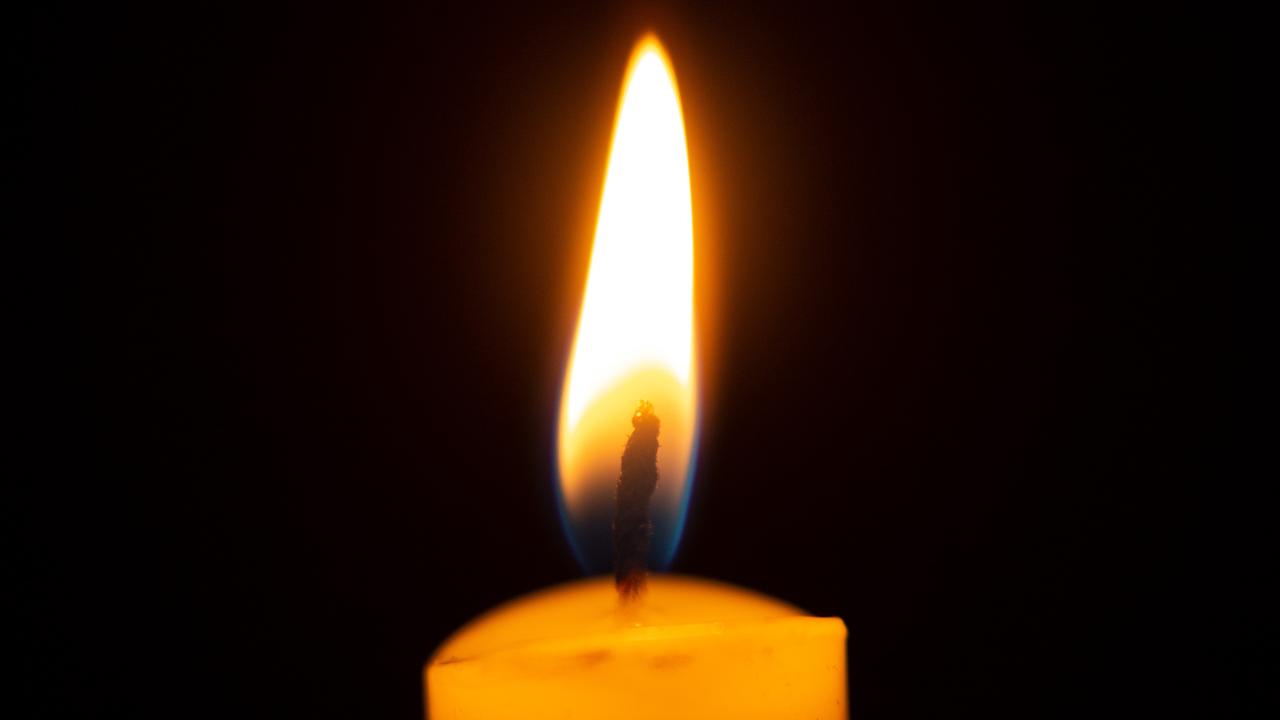Main Anzac references explained ahead of 100 year Gallipoli battle commemorations
LONE Pine, The Nek, Chunuk Bair ... you’ll be hearing a lot more about these places this week, so here’s a quick guide to the key Gallipoli landmarks.
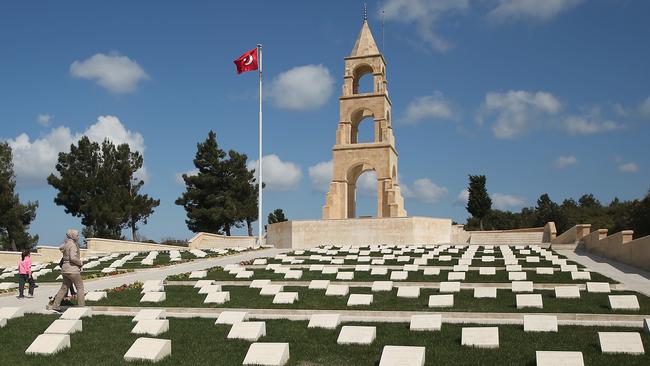
ANZAC Centenary
Don't miss out on the headlines from ANZAC Centenary. Followed categories will be added to My News.
THESE are the places Australians will be hearing about in the lead up to the Anzac centenary commemorations.
ANZAC COMMEMORATIVE SITE
Set on North Beach, under the imposing Sphinx rock outcrop, many men landed here, just to the north of Anzac Cove, on April 25. The site replaced Ari Burnu as the dawn service setting from 2000 to accommodate swelling numbers. North Beach became a casualty station and supply zone during the campaign, and Anzacs were evacuated from here in December, 1915. It was a dangerous place to be until August fighting shifted the Turkish frontline. It then filled with hospital tents and piles of stores. Men hollowed dugouts in the slopes above while boats came and went from wooden piers. The site will feature grandstands for the dawn service itself, as well as a heavy security presence of about 3800 security officers.
ARI BURNU
The lingering warmth between Turkey and Australia was set by Mustafa Kemal Ataturk in 1934 when Australian, New Zealand and British officials visited Gallipoli for the first time since the war.
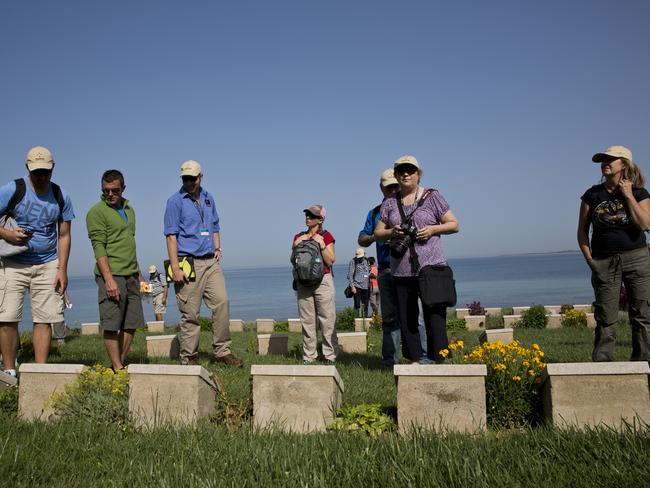
His words were set in stone at Ari Burnu in 1985. Many visitors here, at the north end of Anzac Cove — where 253 men are buried, including some in the ill-fated charge at The Nek at dawn on August 7, 1915 — are overwhelmed by the grandness of Ataturk's sentiments on the stone monolith that soars above the Aegean Sea. This was the site of the Anzac Day dawn service until 2000.
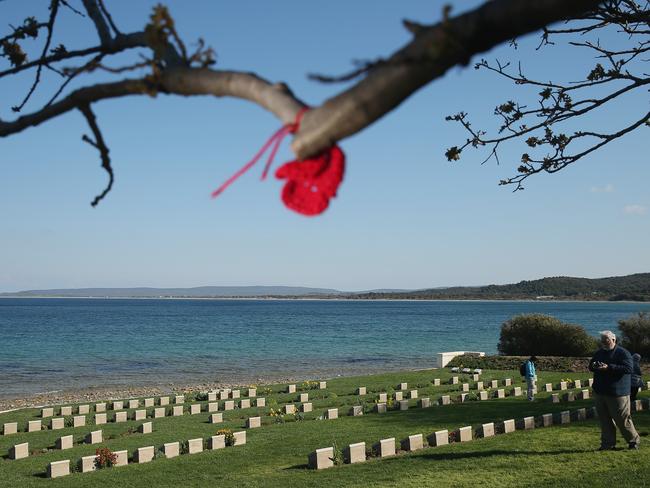
It was a fitting venue: Ari Burnu was the point where the landing boats mistakenly clumped for the landing itself, where a commanding officer described the landing as a “terrible muddle”, and where the men followed orders and blindly climbed the hills. Ataturk spoke of no difference between the “Johnnies” and “Mehmets” lying side by side in a friendly country. They were “heroes that shed their blood”:
You, the mothers,
Who sent their sons from far away countries
Wipe away your tears,
Your sons are now lying in our bosom
And are in peace
After having lost their lives on this land
They have become our sons as well.
LONE PINE
More than 3200 Australians died with no known grave at Gallipoli, as did 456 New Zealanders.
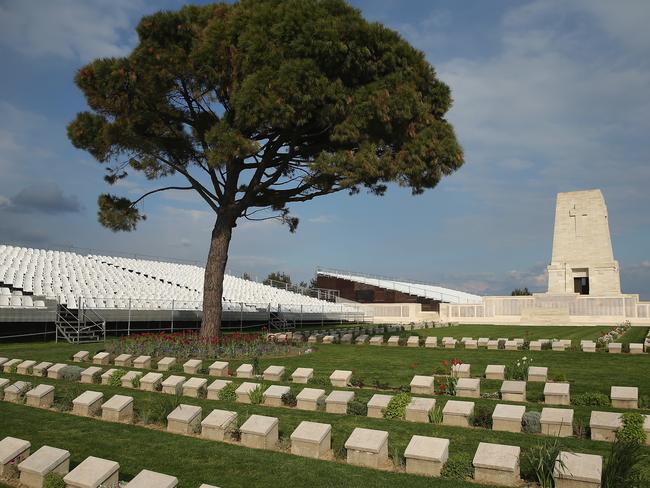
Their names are inscribed at the Lone Pine Memorial, along with the 1212 Anzacs souls who were buried at sea after succumbing to wounds or disease on hospital ships. The site was named for the single pine tree sighted soon after the landing on April 25. It was the scene of some of the bloodiest fighting in Australia's military history. From August 6, 1915, Australia suffered more than 2000 casualties in the Battle of Lone Pine, often in hand-to-hand combat in trenches where the Lone Pine Cemetery and memorial now stand. Seven Victoria Crosses were awarded here, yet the recipients, as well as religious ministers overcome by the scale of the carnage, were always haunted by the savagery and death here. The names of the missing include three 17-year-olds, including two 6th battalion privates who died in the Battle of Lone Pine. Also commemorated is Private James Martin, of Hawthorn in Melbourne. He was buried at sea on October 25, 1915, and is thought to have been the youngest Anzac death. He was 14.
THE NEK
The cemetery here is built in what was No Man's Land: in 1919, four years after the ill-fated charges recounted in Peter Weir's film Gallipoli, the earth was said to be covered in remains.
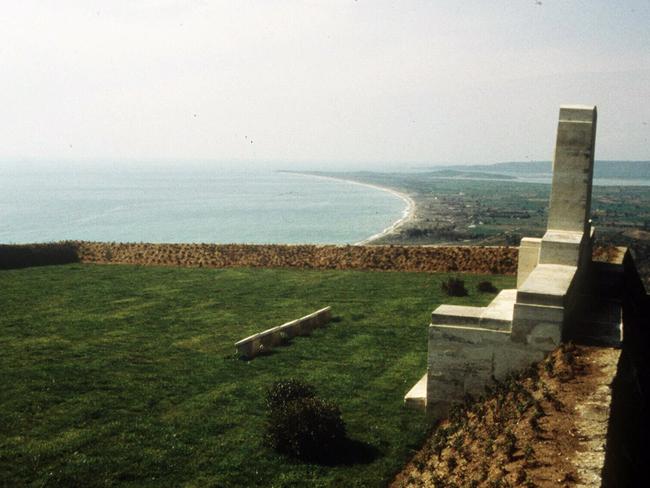
It is accepted that most who died here were the men of the 8th and 10th Light Horse regiments of the 3rd Light Horse Brigade sent to instant death in the dawn of August 7, 1915. It is an eerie place, unusually empty of markers, small and removed. It's here that Trooper Harold Rush turned to a mate and said: “Goodbye cobber, God bless you.” Less well-known is the tale of David McGarvie, of western Victoria, who lay in a crater throughout the day with a wounded foot. He had charged with the first wave and took pot shots at Turks before he crept back to safety after dark. Only five men from the 326 commemorated in the cemetery have known graves: another five soldiers, known to be buried here, have special memorials.
CHUNUK BAIR
Chunuk Bair is New Zealand’s equivalent of Lone Pine: the struggle for the peak’s control was as savage as any battles on the Anzac battleground below.
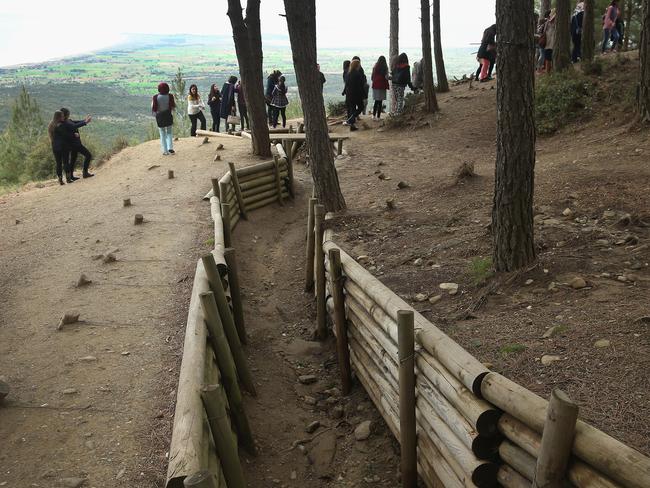
The New Zealanders briefly glimpsed the elusive dream — the Dardanelles — on August 8. Over the next two days and nights the fighting was ferocious: of 760 Wellington Mounted Rifles, for example, only 49 were left unwounded. The loss of the hill by British replacements early on August 10 would be considered a turning point. The New Zealand memorial obelisk commemorates 850 NZ soldiers with no known graves (one of four) in nearby fighting.
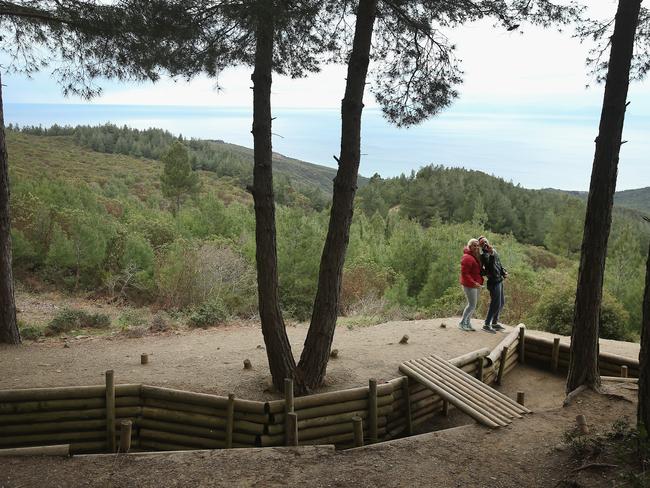
The cemetery has 632 burials, of which 10 graves are identified. The men were buried by Turks after fierce fighting on August 6-8. The memorial stands beside a 10-m statue of Mustafa Kemal Ataturk. His imposing stance features a whip being held behind his back. Balls on the ground mark the place where he was hit by during the August fighting: a pocketwatch was said to have stopped shrapnel from piercing his chest.
THE 57TH INFANTRY REGIMENT MEMORIAL
This regiment responded to the Anzac landing. It was led by Ataturk, who issued the famous order: “I am not ordering you to attack. I am ordering you to die.”
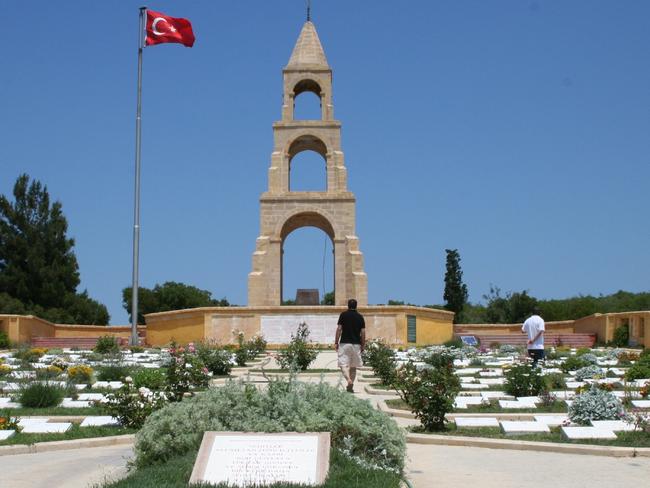
It is placed on the Chessboard, between Quinn’s Post and The Nek at the base of Baby 700, a hill that exchanged hands again and again on that first day as Anzacs tried to climb the heights. The memorial includes the names of 1817 Turkish soldiers said to lie here, the statue of a Turkish soldier, and a statue of Huseyin Kacmaz, the last surviving Turkish veteran who died at 108 in 1994.
QUINN'S POST CEMETERY
Significant for a simple reason: the position was regarded as the most dangerous at Anzac. It was taken by a New Zealand machine gun crew on the afternoon of April 25 before Australians took it over. It was never safe, and many men were picked off by Turkish snipers getting to and from the outpost in the jagged ridge line. Journalist Charles Bean wrote that soldiers looked up to it as they might a “haunted house”. It was marked by bomb throwings, tunnelling and the ghastly smell. Named after Captain Hugh Quinn, of the 15th battalion, who took over the position on April 29, only to be killed there a month later when the Turks briefly overran the position. Of 473 burials in the cemetery, 294 are unidentified. Sixteen known to be buried there are Light Horsemen killed in a diversionary charge on the morning of August 7.
THE NUSRET
A replica of the small Turkish minelayer sits on the shores of the Dardanelle Straits in Canakkale.
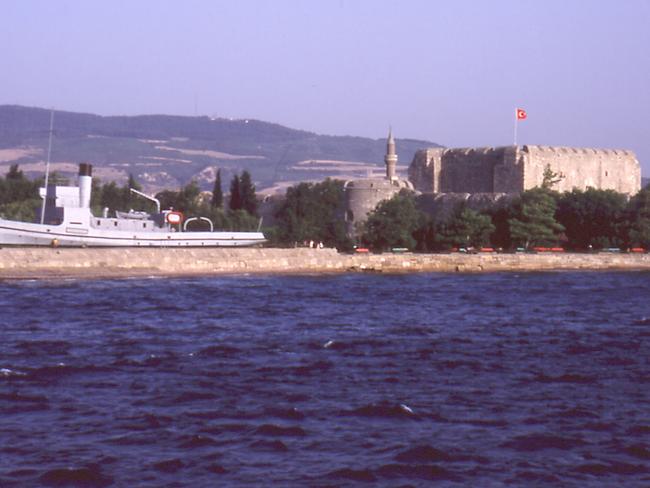
The ship's captain changed history when he laid 20 or 26 mines parallel to the shoreline rather than across the straits before March 18, 2015. British ships were seeking to breach Turkish defences and sail to Constantinople.
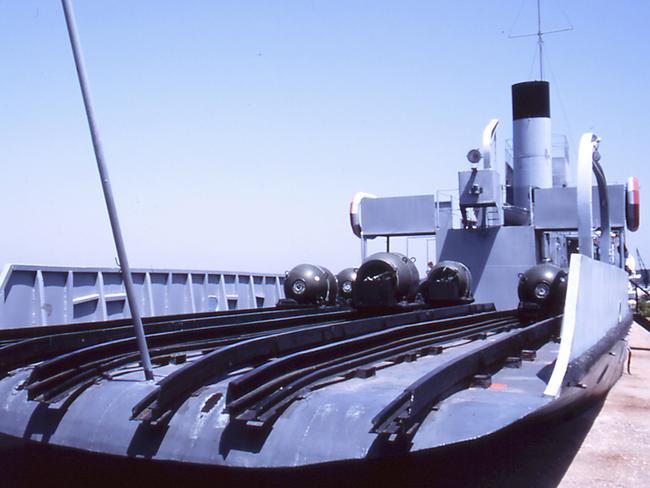
Yet what was once the world's greatest navy had been outwitted: her manoeuvres were routine, her ships kept turning around at the same place. Three were hit by the mines: two sank, the other was badly damaged. The British Navy abandoned its efforts, prompting plans for the land attack now known as Gallipoli. Nusret's captain, Hakki Bey, has been honoured as a hero ever since — only days earlier, he had suffered a heart attack. Conjecture continues to this day whether the British should have persisted with a naval strategy.
Originally published as Main Anzac references explained ahead of 100 year Gallipoli battle commemorations


